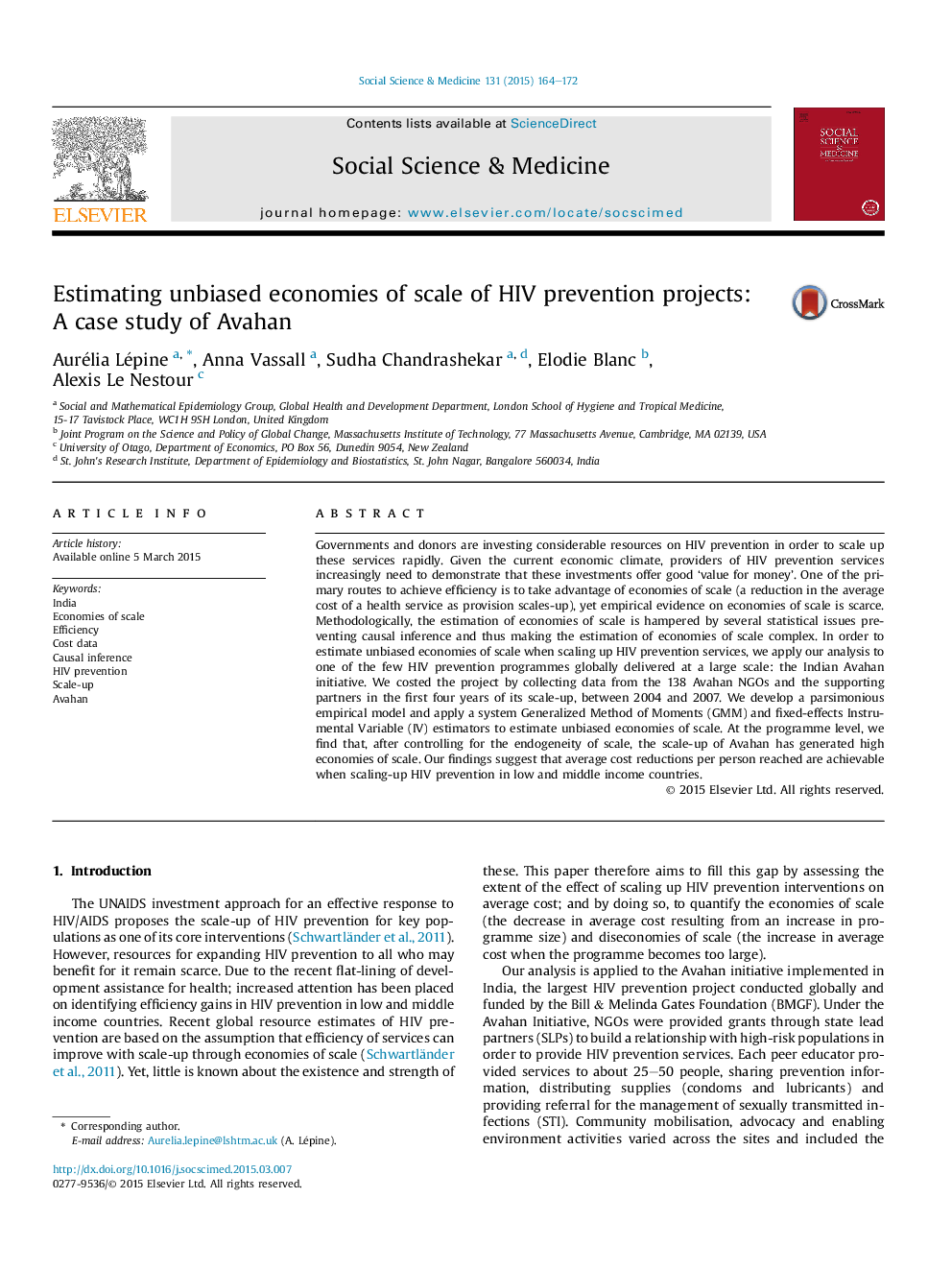| Article ID | Journal | Published Year | Pages | File Type |
|---|---|---|---|---|
| 7333057 | Social Science & Medicine | 2015 | 9 Pages |
Abstract
Governments and donors are investing considerable resources on HIV prevention in order to scale up these services rapidly. Given the current economic climate, providers of HIV prevention services increasingly need to demonstrate that these investments offer good 'value for money'. One of the primary routes to achieve efficiency is to take advantage of economies of scale (a reduction in the average cost of a health service as provision scales-up), yet empirical evidence on economies of scale is scarce. Methodologically, the estimation of economies of scale is hampered by several statistical issues preventing causal inference and thus making the estimation of economies of scale complex. In order to estimate unbiased economies of scale when scaling up HIV prevention services, we apply our analysis to one of the few HIV prevention programmes globally delivered at a large scale: the Indian Avahan initiative. We costed the project by collecting data from the 138 Avahan NGOs and the supporting partners in the first four years of its scale-up, between 2004 and 2007. We develop a parsimonious empirical model and apply a system Generalized Method of Moments (GMM) and fixed-effects Instrumental Variable (IV) estimators to estimate unbiased economies of scale. At the programme level, we find that, after controlling for the endogeneity of scale, the scale-up of Avahan has generated high economies of scale. Our findings suggest that average cost reductions per person reached are achievable when scaling-up HIV prevention in low and middle income countries.
Related Topics
Health Sciences
Medicine and Dentistry
Public Health and Health Policy
Authors
Aurélia Lépine, Anna Vassall, Sudha Chandrashekar, Elodie Blanc, Alexis Le Nestour,
